Consumer
/Home & Leisure

Amid homeowner insurance crisis, consumer advocates and industry clash at hearing
The fault lines running through California's spiraling homeowners insurance crisis were on display Tuesday at a state hearing, where consumer advocates clashed with industry firms over a plan to allow insurers to use complex computer models to set premiums — a move state officials say will attract insurers to the market.
State Insurance ...Read more

'Don't piss off the DOJ': Veteran Las Vegas agents react to renewed push against Realtors
Multiple veteran Las Vegas real estate agents say they are largely on board with the upheaval currently going on in their industry.
It’s time for change and more transparency in their governing bodies, they say.
A federal appeals court ruled earlier this month that the U.S. Justice Department could restart its investigation into the policies...Read more

PulteGroup announces 10% jump in revenues, earnings up 32%
PulteGroup last quarter had revenues of $3.8 billion, a 10% jump from the same period a year ago, as the nation’s housing shortage promises to fuel more construction, the company announced Tuesday.
The Atlanta-based homebuilding giant reported a 32% bounce in earnings, an 11% increase in the number of homes sold, as well as a higher profit ...Read more

Survey: More than 1 in 3 American travelers plan to go into debt for their summer vacations this year
Perhaps your summers hold fond memories of strolling along the beach, hiking mountains or trying new foods at a destination hundreds of miles from home. If so, are you planning to keep the travel streak going this year? Would you go into debt for it?
A new Bankrate survey found that only about half (53%) of Americans are planning a summer ...Read more
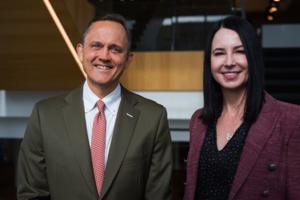
Thrivent has found a way for everday folks to get a piece of the private equity market
Private equity has been an outperforming investment options for years, but it's not been an option for most investors.
Private equity investment options have generally been reserved for institutional investors or people who have at least $5 million or more to commit. That has left the bulk of investors watching from the lobby.
Now Minneapolis-...Read more

California sees two more property insurers withdraw from market
California’s already strained property insurance market is facing a new challenge as two more insurers, Tokio Marine America Insurance Co. and Trans Pacific Insurance Co., plan to withdraw from the wildfire-prone state entirely starting in July.
The two companies, units of Japan-based Tokio Marine Holdings Inc., disclosed their plans in ...Read more
NYC storefront vacancies remain stuck at pandemic levels; lower Manhattan hit hard
Storefront vacancy rates in New York City have yet to recover from pandemic peaks, with Manhattan in particular struggling to bounce back, new city data show.
The issue made headlines during the pandemic, when retail storefronts on many major thoroughfares sat empty as businesses across the city shuttered. The issue was the focus of a City ...Read more

US existing-home sales decline as rates keep buyers sidelined
Sales of previously-owned homes in the U.S. fell in March from a one-year high, underscoring the lingering impact of high mortgage rates and elevated prices.
Contract closings decreased 4.3% from a month earlier to a 4.19 million annualized rate, according to National Association of Realtors data released Thursday. The pace was in line with ...Read more
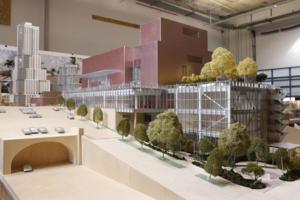
Downtown LA is hurting. Frank Gehry thinks arts can lead a revival
With two major expansions of downtown Los Angeles cultural institutions in the works, Bunker Hill is primed to elevate its status as the region's leading arts center even as the area around it struggles with persistent homelessness and post-pandemic losses of office tenants.
Bunker Hill will soon have the largest concentration of buildings ...Read more
Real estate Q&A: How can I get my HOA to allow car covers?
Q: I recently moved and am now, for the first time, dealing with a homeowners association. I have a classic Cadillac that I used to keep covered at my previous residence. The rules in place at my new residence forbid car covers. Other nearby communities seem to allow covered cars, but not mine, so this rule was established by my association only...Read more
US tax refunds declined 3.3% this year in run-up to deadline
Fewer U.S. taxpayers have received a refund this year in the run-up to tax day compared to 2023, signaling some consumer spending may be disrupted.
Data from the Internal Revenue Service showed that 66.8 million taxpayers were reimbursed through April 5 compared to 69.1 million through April 7 last year. That means that 3.3%, or roughly 2.3 ...Read more

GM says it will move headquarters from RenCen to Hudson's site in 2025
DETROIT — General Motors Co. on Monday said it will move its global headquarters to the Hudson’s Detroit development next year as it works with billionaire mortgage mogul Dan Gilbert's real estate firm to redevelop the Renaissance Center, its current home a mile away.
GM CEO Mary Barra alongside Gilbert, Mayor Mike Duggan and Wayne County ...Read more

How to save money at the pharmacy counter
Steve Wexler has experienced the trouble of finding affordable prescription drugs.
A few years ago, the 70-year-old Plymouth, Minnesota, resident opted to cut short his prescription for Eliquis, a popular blood thinner, rather than pay nearly $1,000 out-of-pocket for his final month on the medication.
Smart shopping can't always tame high ...Read more
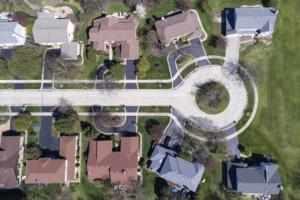
Cheap mortgages deter workers from relocating for $250,000 jobs
Manager recruits in the industrial Midwest are shunning offers to move to the American South — in part because they’re locked into super-low 30-year mortgages.
A tight labor market that’s allowing workers to stay closer to home, rising housing costs and a post-pandemic shift toward remote or hybrid-work arrangements are making it a ...Read more
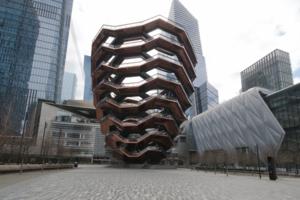
Hudson Yards Vessel to reopen three years after spate of deaths
The Vessel at Hudson Yards will reopen later this year, it was announced on Friday, three years after it was shuttered following a spate of suicides.
The honeycombed installation opened in March 2019 as the centerpiece of the new Hudson Yards neighborhood in Midtown Manhattan. But it quickly gained notoriety after several visitors took their ...Read more
Real estate Q&A: How can we get rid of our rowdy renters?
Q: Lately, some of the renters in our townhome community have been disruptive. There have been noise disturbances, domestic violence, unleashed pets, and even open drug use. When some homeowners raised their concerns, the association said their ability to address the problem was limited, and changing rental bylaws was almost impossible. What can...Read more
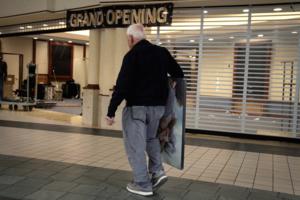
Zombie malls and other retail centers getting extreme makeovers to keep up with the times
Denise Richardson took her kids to Spring Hill Mall in West Dundee, Illinois, so often that at Christmas time, the Santa Claus there recognized them by name. She remembers when department stores moved out of Elgin, then a city of 64,000 people in the exurbs of Chicago, to the mall when it opened in 1980, and it was the place to be.
But the mall...Read more

Downtown Chicago's condo development boom has ended. Here's why
For the first time in years, there are no new large condo projects under construction in downtown Chicago.
Roughly 2,500 condos have been developed downtown since 2015 as multiple towers were constructed, and about 600 of those units are still available, said Gail Lissner, managing director for Integra Realty Resources.
But the high cost of ...Read more

Sorry, home sellers: The 6% commission isn't going anywhere
Negotiation is an essential part of buying or selling a home. But for nearly a century, there’s been one part of the process where haggling doesn’t fly: the 5% to 6% standard commission charged by U.S. realtors. Now, in a dramatic turn of events, the National Association of Realtors has settled a class-action lawsuit that targeted the ...Read more
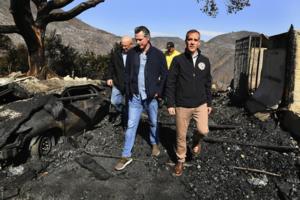
Upscale Westside LA neighborhoods hit hard by State Farm home insurance cancellations
Thousands of Californians who won't see their home insurance renewed by State Farm this summer are homeowners in Los Angeles County, with some upscale Westside neighborhoods hit hard, according to the insurer's recent filings with the Department of Insurance.
A majority of the insurer's customers in neighborhoods in West Los Angeles as well as ...Read more
Popular Stories
- 'Don't piss off the DOJ': Veteran Las Vegas agents react to renewed push against Realtors
- Survey: More than 1 in 3 American travelers plan to go into debt for their summer vacations this year
- PulteGroup announces 10% jump in revenues, earnings up 32%
- US tax refunds declined 3.3% this year in run-up to deadline
- Thrivent has found a way for everday folks to get a piece of the private equity market





